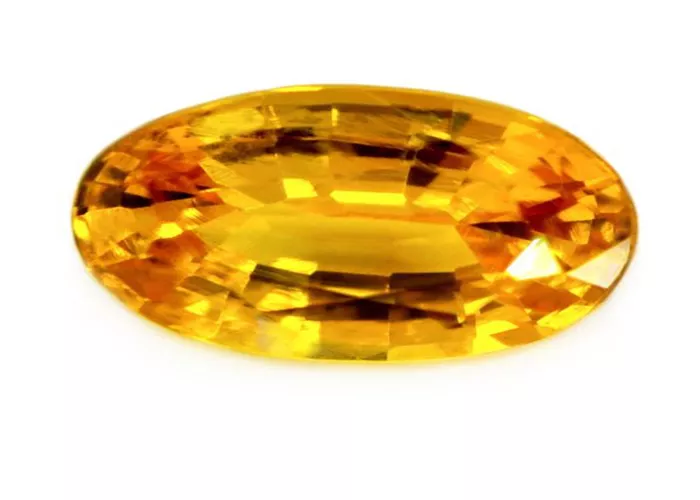Yellow sapphires are a stunning and popular choice among gemstones, known for their vibrant hue and brilliance. When it comes to selecting the best shape for a yellow sapphire, various factors come into play, including personal preference, setting, and the stone’s quality. This article aims to demystify the process and criteria used in such evaluations, with a focus on yellow sapphires.
Understanding Yellow Sapphires
Yellow sapphires are a type of corundum, just like their blue sapphire counterparts. However, the coloration in yellow sapphires is due to trace elements like iron or titanium. These gemstones can range from a pale yellow to a vibrant, golden hue. Their popularity stems from their beauty, durability, and rarity, especially in deeper shades.
Importance of Shape in Jewelry Appraisal
Shape is a crucial factor in evaluating any gemstone, including yellow sapphires. It affects the gemstone’s appearance, brilliance, and overall suitability for different types of jewelry settings. Understanding the different shapes and their characteristics is essential for making informed decisions about which shape is best.
Common Shapes of Yellow Sapphires
Round Brilliant Cut
The round brilliant cut is the most popular shape for gemstones, including yellow sapphires. This shape maximizes brilliance and fire, creating a sparkling appearance. The round brilliant cut has 58 facets, carefully arranged to reflect light in a mesmerizing way.
Pros:
- Maximizes brilliance and fire.
- Versatile and suitable for various types of jewelry.
- Timeless and classic look.
Cons:
- Can result in more waste of the rough gemstone during cutting.
- May not highlight the unique coloration of some yellow sapphires as well as other shapes.
Oval Cut
The oval cut is similar to the round brilliant cut but offers an elongated shape. This shape can make fingers look longer and is often used in engagement rings and pendants.
Pros:
- Similar brilliance and fire to the round brilliant cut.
- Elongated shape can enhance the appearance of the hand.
- Offers a modern twist on the classic round shape.
Cons:
- Can sometimes appear less symmetrical if not cut well.
- More prone to chipping at the pointed ends.
Cushion Cut
The cushion cut is a square or rectangular shape with rounded corners. This shape combines the brilliance of a round gemstone with the uniqueness of a rectangular shape.
Pros:
- Offers a vintage look.
- Good for showcasing the depth and color of yellow sapphires.
- Versatile for different types of jewelry.
Cons:
- Can vary widely in appearance depending on the cutting style.
- Not as brilliant as the round brilliant cut.
Emerald Cut
The emerald cut is a rectangular shape with stepped facets. This shape is known for its elegance and clarity, making it an excellent choice for larger yellow sapphires.
Pros:
- Highlights the clarity and color of the gemstone.
- Offers a sophisticated and elegant look.
- Ideal for larger gemstones.
Cons:
- Not as brilliant as other cuts.
- More prone to showing inclusions and flaws.
Princess Cut
The princess cut is a square shape with a brilliant-cut facet arrangement. This shape is popular for its combination of modernity and brilliance.
Pros:
- Maximizes brilliance and fire.
- Modern and stylish look.
- Versatile for different types of jewelry.
Cons:
- Prone to chipping at the corners.
- Requires careful setting to protect the corners.
Marquise Cut
The marquise cut is a pointed oval shape with two large ends. This shape can create a dramatic and eye-catching appearance.
Pros:
- Maximizes carat weight appearance.
- Offers a unique and sophisticated look.
- Can make fingers look longer.
Cons:
- More prone to chipping at the pointed ends.
- Requires careful setting to maintain its shape.
Radiant Cut
The radiant cut is a rectangular or square shape with a brilliant-cut facet arrangement. This shape offers a balance between brilliance and clarity.
Pros:
- Combines the best of both the emerald and princess cuts.
- Good for showcasing the color and clarity of yellow sapphires.
- Versatile for different types of jewelry.
Cons:
- Can vary widely in appearance depending on the cutting style.
- Requires careful cutting to avoid looking too bulky.
Heart Shape
The heart shape is a romantic and symbolic choice for yellow sapphires. This shape requires precise cutting to achieve a balanced and symmetrical appearance.
Pros:
- Symbolizes love and romance.
- Unique and eye-catching.
- Perfect for romantic jewelry like engagement rings.
Cons:
-
- More prone to chipping at the points.
- Requires careful cutting and setting.
Evaluating Yellow Sapphire Shapes in Practice
Initial Inspection
Shape Consideration
Cut Quality Evaluation
Setting Consideration
Conclusion
In summary, yellow sapphires come in various shapes, each with its own characteristics and appeal. Whether you prefer the timeless elegance of a round brilliant cut or the sophisticated look of an emerald cut, the best shape for you will depend on your personal preferences, the quality of the gemstone, and the type of jewelry setting you have in mind. By carefully evaluating these factors, you can choose a shape that maximizes the beauty and value of your yellow sapphire.
Related topic:
- The Mystique of Yellow Sapphire: Exploring Its Benefits
- How Much Ratti Yellow Sapphire to Wear: A Comprehensive Guide
- The Cosmic Connection: Yellow Sapphire for Which Planet?


